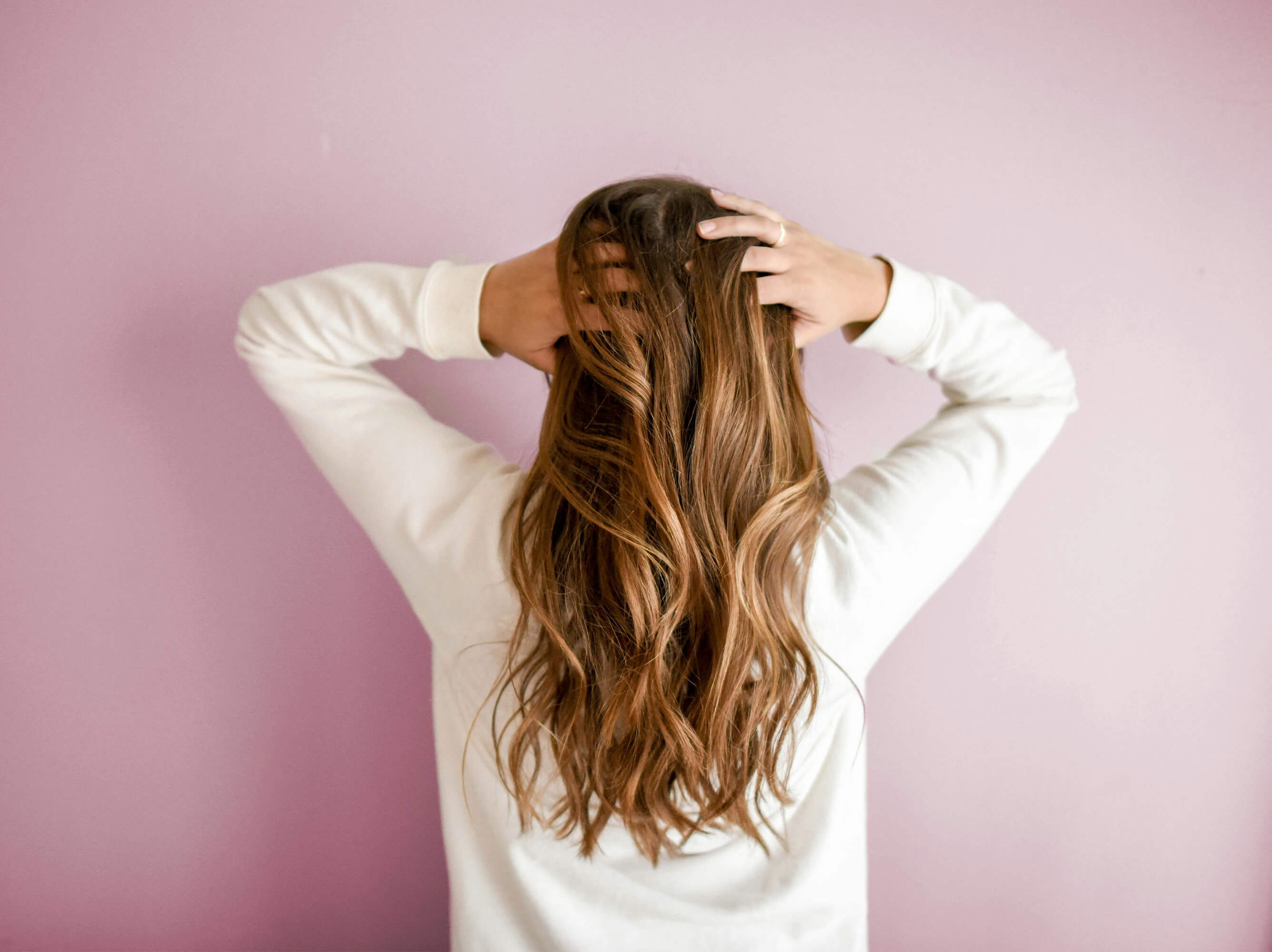Silk Pillowcases vs Satin: Let's Settle the Debate
Thursday, June 06, 2024

Silk Pillowcases vs Satin
When it comes to getting a good night's sleep, every detail matters, even down to the fabric of your pillowcase. Which is better for our skin and hair: a satin or silk pillowcase? The debate has gained attention due to increased awareness of the impact they can have on our skin and hair health.
It's important to remember that we spend a lot of time with our faces on our pillowcases. This makes your choice of materials particularly impactful on your skin and hair health over time.
This article compares satin and silk pillowcases, explaining their differences and advantages to help you choose wisely.
Remember, it's not only about satin or silk pillowcases, but choosing the one that suits your needs and improves your sleep. Let's dive in and explore the difference between these two popular choices.
Satin vs Silk, The 411
Satin and silk may look alike, but they have important differences that affect how you sleep. It's like comparing apples and oranges; they're both fruit, yes, but they offer different flavors and benefits.
Material & Production
The fundamental difference between satin and silk originates from the way people make them. Silk is a natural fiber, originating from the cocoons of the silkworm. It's a lengthy and delicate process, which contributes to the cost of pure silk products.
On the other hand, satin is not a material, but a type of weave. It can consist of various materials, such as silk, polyester, or nylon. This means satin's quality and feel can vary dramatically depending on the fibers used. Generally, satin made from synthetic fibers is more affordable than silk.
Texture and Feel
Both satin and silk have a smooth, shiny surface that feels luxurious against the skin. However, silk often has a softer, more supple feel, attributable to its natural protein composition. Satin, especially when made from synthetic materials, can feel slightly stiffer, though it retains a sleek, glossy appearance.
Durability
Silk, a natural protein fiber, is incredibly durable and can withstand wear and tear, as long as you take proper care of it. Conversely, satin's durability depends on the fibers used in its weave. While silk satin can be quite durable, satin made from synthetic fibers may not last as long.
Understanding these differences is key when deciding between a satin or silk pillowcase. It's more than just satin vs. silk; it's about assessing your needs, budget, and potential benefits of each.

What is Silk?
So, as your ever-reliable, friendly textile guide, let's delve into the beautiful world of silk, shall we?
Silk, in its most basic sense, is a natural protein fiber, specifically a kind of fibroin – pretty science-y, right? But how does it go from being part of a silkworm's diet to the luxurious fabric you're familiar with?
The magic starts when silkworms feed on mulberry leaves. As they munch away, they prepare to enter their cocoon stage. To do so, they spin a thread of raw silk from their body in a unique figure-8 pattern.
Silkworms make cocoons. They unravel the silk thread inside to make silk yarn. Skilled workers then tale those cocoons and make silk fabric from the silk threads. Silk has a natural shine because of its prism-like structure. Silk bends light at different angles, making it shimmer attractively.
Another notable characteristic of silk is its impressive strength. Despite being incredibly soft, silk is robust and durable, which may seem surprising given its delicate feel. But, when cared for correctly, a silk fabric can last for years, making it a prized material across the globe.
Silk is great for all seasons because it lets air pass through, keeping you cool in summer and warm in winter. Pretty nifty, right?
Silk pillowcases are beautiful. You may have heard about their benefits and want to know if they're as good as people say. Well, my friend, let me lay out the facts for you.
Silk pillowcases are soft to sleep on. They also have many benefits for your beauty routine. Additionally, they improve sleep quality.
Skin-Friendly
Silk makes your skin smoother, reducing friction with your pillowcase. This can lead to fewer creases and wrinkles.
Another plus? Silk is less absorbent than other materials, so it doesn't rob your skin of precious moisture or your favorite night cream. If you've been unknowingly battling with a moisture-hogging pillowcase, switching to silk could be your face's new favorite thing!
Antimicrobial
Silk has natural defenses against. Acne causing bacteria. So when you are sleeping you are not only repairing your skin from previous damage, but fighting future breakouts as well.
Hair Health
Ever had that dreaded 'bedhead'? Silk pillowcases can help reduce it. The smooth surface of silk means less friction on your hair, which can help prevent tangles, breakage, and split ends. Silk is a curlie girl's best friend. Fights frizz and maintains hydration
If you want to keep your hair looking fresh from the salon for longer, try using a silk pillowcase. It can be your hair's secret weapon.
Hypoallergenic
Silk also has a natural resistance to dust mites, fungus, mold, and other allergens. Silk pillowcases can help people with allergies or sensitive skin sleep without sneezing or itching. These allergen fighting properties definitely sets silk apart from satin.
Temperature Regulation
Ever flipped your pillow to get to the cool side? With a silk pillowcase, you may not need to. Silk is a natural thermal regulator and can help maintain your body temperature—keeping you cool in summer and warm in winter.
So, there you have it! Investing in a silk pillowcase is more than just treating yourself to a touch of luxury—it's a thoughtful and practical move for improving your night's sleep and maintaining your skin and hair health. In the world of bedtime textiles, this might just be one choice where beauty and practicality meet.

What is Satin?
Now that we have covered the basics of silk, let's turn our attention to satin. You're probably familiar with its glossy surface and luxurious feel, but Satin is more than what meets the eye.
First off, it's important to clear one common misconception – unlike silk or cotton, satin is not a type of fiber. Instead, it's a type of weave. A weave, you ask? Yes! The way threads are combined is what gives fabrics their unique characteristics, and satin has its very own!
Satin is a fabric with a shiny front and a less shiny back. It is created by weaving it in a specific manner. Satin weave has four or more fill or weft yarns floating over a warp yarn or vice versa. This creates a smooth, shiny front face. The type of threads used in the weave affects the satin's final properties.
Satin is usually made from synthetic fibers like polyester or nylon, which are cheaper than silk. These fibers still have some of the good qualities of satin, even though silk can also be used to make it.
The look and feel of satin depend greatly on the type of yarns used. For example, synthetic satin made from polyester tends to have a glossy sheen and a soft, slippery feel, while satin made from silk boasts an ultra-luxurious feel and deeper luster. Benefits of Satin Pillowcases
Like silk, satin pillowcases bring benefits to the table that can make a real difference in your sleep and beauty routines. Ready to learn more?
Smooth Surface
Satin's smooth, glossy surface provides less friction for your skin and hair when compared to traditional cotton pillowcases. If you're sensitive to those pillow-crease lines on your face or tired of dealing with tangled hair in the morning, satin pillowcases might be your new best friend. Though it doesn't have the anti microbial properties of silk and may trap bacteria that causes acne.
Hair Health
Reduced friction isn't just helpful for preventing facial creases – it's also great for maintaining healthy hair. The smooth surface of satin pillowcases can reduce hair breakage, split ends, and frizz. As a result, you could wake up to more manageable, shinier locks. Though it is absorbent and will pull moisture from your locks.
Budget-Friendly
While silk is the epitome of luxury, it often comes with a price tag to match. Satin, on the other hand, offers an affordable alternative that still provides some of the benefits of silk. You can often find satin pillowcases made from synthetic fibers like polyester or nylon at attractive prices – without skimping on the glossy, silky feel.
In summary, satin pillowcases offer a range of benefits similar to those of silk but are generally more affordable, but remember you get what you pay for.
In conclusion both silk and satin pillowcases offer unique benefits that not only enhance your sleep but can spruce up your beauty routine too. Who knew sleep could have such lovely side effects?
Silk, with its natural origins and lustrous feel, tends to be superior in terms of breathability and moisture retention, making it a fantastic choice for those willing to invest in a high-quality, long-term option. Its benefits for skin and hair health, combined with hypoallergenic properties, make it a desirable choice—if it fits within your budget.

Q&A
1. Is satin as good as silk for hair and skin?
While silk typically edges out satin in terms of overall benefits for hair and skin due to its natural proteins and amino acids, satin, with its smooth surface, can still help minimize friction and reduce hair breakage and skin creases. So, even if you're going with satin, you can still expect to see some positive changes!
2. Can I machine wash silk or satin pillowcases?
Generally, satin pillowcases (especially those made with synthetic fibers) can be machine washed and are less finicky to care for. Silk, on the other hand, is often more delicate and many manufacturers recommend hand washing or professional cleaning. However, some types of silk pillowcases can be machine washed on a gentle cycle. It's best to check the care label to be sure.
3. Does satin absorb moisture like silk does?
While both materials are smoother and less absorbent than cotton, natural silk typically outperforms synthetic satin when it comes to retaining moisture. So if keeping your skin hydrated is a priority, then a silk pillowcase would be a better pick.
4. Is all satin shiny?
Most satin has a shiny side and a dull side due to the specific weave pattern. This glossy finish is characteristic of the satin weave. However, the shininess can vary depending upon the type of fibers used.
In conclusion, if all you are looking for is less friction and the benefits that come from it, then Satin is a good enough solution. If you want more, including acne fighting, allergen free, and helps your skin and hair retain moisture. If you are looking for great, you are looking for silk. Get yours at Bloomysilk.com








